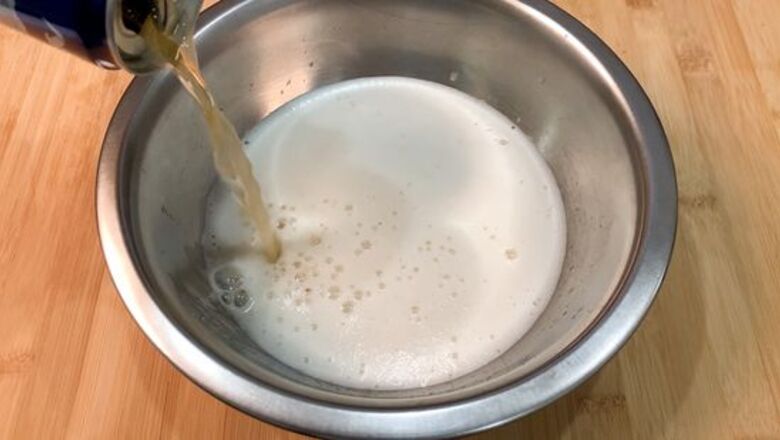
views
Making Beer Batter
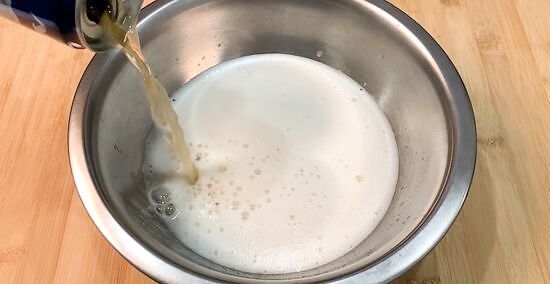
Use one 12 oz beer you like to drink. Beer batter can be made with any style or variety of beer, so you should feel free to experiment with different styles to see what you like best. If you've got Bud Lite on hand, that would make for just as good a beer batter as a craft IPA. Generally, ales and lagers are used to make beer batters. The lighter and more carbonated, the lighter the batter. If you're not a big fan of beer flavors, use a lighter lager or a pilsner. Darker stouts, porters, and ales are also perfectly fine for making beer batter, and will add a malty richness to the batter. Sometimes, these beers are significantly less carbonated, so it might be a good idea to cut it with half sparkling water.
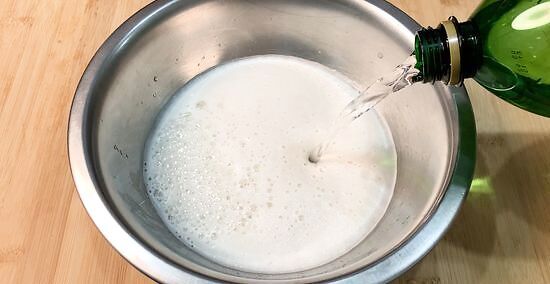
Mix beer with equal parts of water, if you want. It's fine to just use beer in the batter, but some people like to cut it in half with an equal amount of water to stretch the batter a bit, and to save the beer for drinking with dinner. While beer batter is similar in some ways to a basic pancake batter, never add milk to beer batter. Milk added to beer will curdle, unless a small amount of lemon juice is added. If you're wondering, the process of frying the beer cooks off all the alcohol. Adding more beer won't make the fried food more boozy.
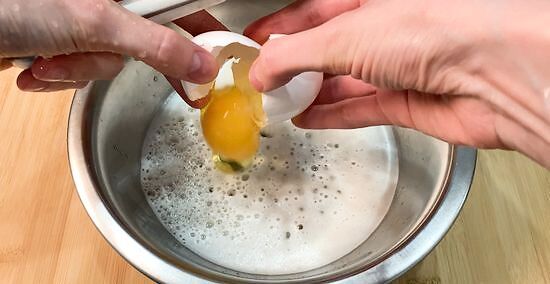
Beat in one egg. Into your beer mixture, beat an egg directly into the liquid, until it’s frothy. Some people leave this step out and just stick to a basic beer-and-flour batter, which is perfectly effective. But, beating in an egg helps to add a little body and golden richness to the batter, helping it to crisp up a little more nicely.
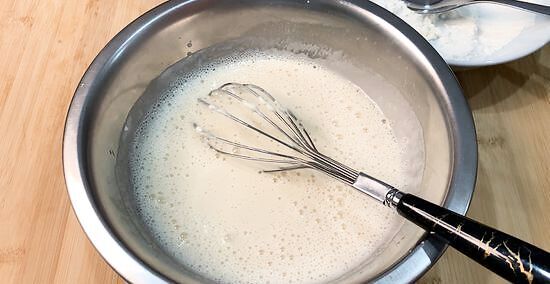
Whisk in all-purpose flour. Holding your whisk in one hand, start adding flour to the beer mixture, a few tablespoons at a time, whipping it vigorously to avoid lumps. Integrate all the flour you add until you add more. If you use one 12 oz bottle or can of beer, you'll need about 2 cups of flour to make batter. This will make enough batter to coat about 20 fish fillets.
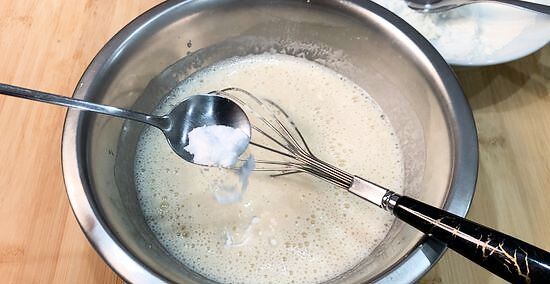
Add 3/4 teaspoon of baking powder. If you want a fluffier, more cake-like beer batter, it's also good at this point to add about a 3/4 of baking powder, like if you were making pancakes. If you don't have it on hand, it's also fine to leave out.
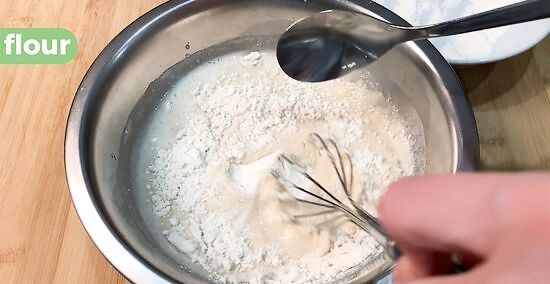
Continue whisking in flour until the batter reaches the desired thickness. Depending on how much batter you're making, and what you're using with it, you may want it thicker, or thinner, depending. Some people prefer a thicker, hearty coating, while others prefer a thinner and lighter version, which can be more crispy. Totally up to you. Some people suggest adding flour until the whisker can stand straight up in the bowl. Match the batter to complement what you're making. If you're making a really light, flaky fish, or squash chips, try to keep the batter somewhat lighter in turn.
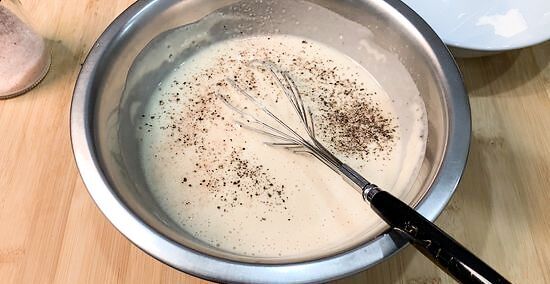
Season to taste. Generally, beer batter is seasoned with little more than salt and fresh black pepper, but you can use whatever seasonings match the dish that you're eventually planning to make. If you're making fish, add a little Old Bay, or Cajun spice mix to the batter. If you're making vegetable chips or potato wedges, try adding a pinch of curry powder or turmeric with a pinch of spice to taste.
Frying Beer Battered Foods

Set up a battering station. After you've made your beer batter and prepared the food that you're going to batter it with, set up a battering station just to the side of the stove, where you can drop the food into the oil, and bring it out effectively. If you can, frying food is a little easier with a helper, since it takes a lot of steps that need to happen pretty quickly. To the left, put your raw fish, or chopped onions, or other vegetables, then put the bowl of batter between the food and the oil. On the other side of the range, have a plate waiting with some paper towels, to place the fried items onto when they're done cooking. It's a good idea to wear gloves and long sleeves, and to pull your hair back while you're doing this. It's not the cleanest process. Also, it's a good idea to crack a window as the smell of frying oil is strong.
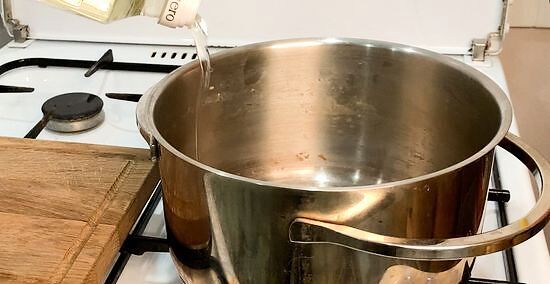
Heat a half-inch to an inch of vegetable oil in a sturdy cast iron skillet. The best pans for frying food evenly are big cast-iron skillets, which will distribute the heat and offer a more even frying. If you don't have one, use a flat-bottomed skillet with as heavy a bottom as you've got, or a deep fryer.
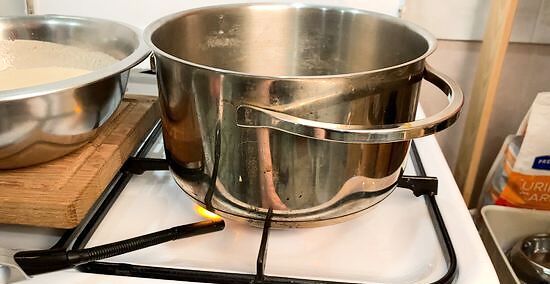
Heat until the oil shimmers. Vegetable oil needs to be heated to 375 °F (191 °C) to fry food in it effectively. If the temperature is too low, the batter will absorb much of the oil and will become extremely greasy and cloying. If you don't have a food thermometer, the best way to tell if the temperature is in the “Goldilocks Zone” is to see if the oil is shimmering on the surface. It's also a good idea to add a little bit of batter by itself while the oil is heating. When you see it start to sizzle quickly, you will know that it’s time to add the battered items to the skillet.

Batter your food. When the oil is ready, and not before, batter a few pieces of fish or vegetables, whatever you're planning on frying, and place them immediately into the hot oil. Make sure food is dry before dipping into wet beer batter. If your fish fillets are very delicate, or damp, it's good to dust them lightly in flour before dipping them in the beer batter. This helps fish fillets and shellfish hold the batter slightly better. Don't soak the food in the batter. It should collect enough to create the crust just by quickly submerging it in the batter and removing it.
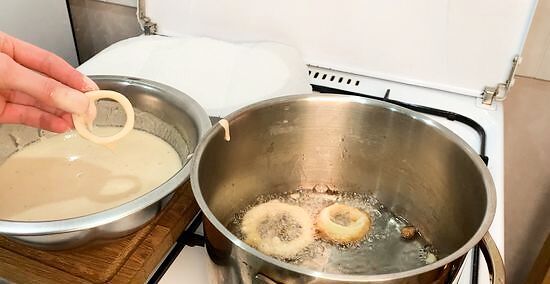
Add the battered food. Carefully lay your food into the hot oil, by dropping it away from you, very gently. Drop one end of each fillet or vegetable in to the food, and then lean it back toward the back of the skillet, away from you. This way, the oil will spatter in that direction. Adding food will lower the temperature of the oil slightly, so you want to be sure to avoid overcrowding the skillet. You can add a few pieces, depending on the size of the food you're frying, but usually no more than 3-4. If you overcrowd the pan, nothing will cook properly, and the food will be oily. When the oil is hot, it will start to spit and spatter a bit, even when you're not dropping stuff, which means you should be extremely careful to avoid burns.
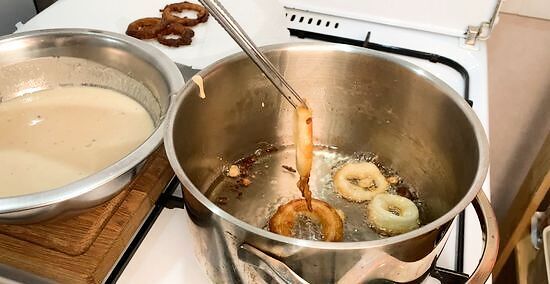
Use a metal turner to turn the food. Just leave the food alone as it fries, checking every minute or two for brownness on the bottom side. Flip the item when golden, and let the other side fry.

Cook 5-7 minutes on each side, until golden brown. Fish and vegetables will cook pretty quickly in the fryer, so they're usually safe to remove when the crust is golden brown. Remove them with your metal turner immediately, shifting them to the plate prepared with paper towel.
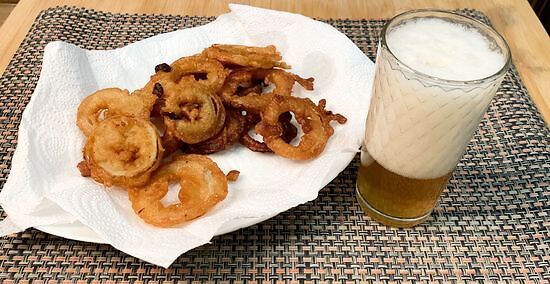
Check out other frying articles. If you want to know what to batter, and more specific guidelines for making fried foods, check out these wikiHow guides, all workable with beer-battering: How to Fry Fish How to Make Onion Rings How to Cook for a Southern Fish Fry How to Make French Fries


















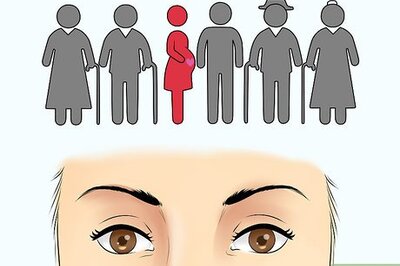
Comments
0 comment